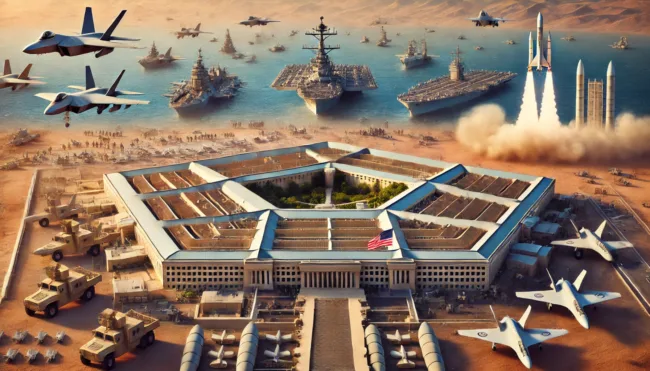America beefs up military presence in Middle East to support Israel amid Iran’s war warning
In a decisive move to bolster regional stability and safeguard its interests, the Pentagon has confirmed the deployment of additional military assets to the Middle East. This strategic decision, announced on August 2, 2024, comes as Israel faces heightened threats from Iran, Hamas, and Hezbollah.
The Pentagon’s latest decision to ramp up US military deployment in the Middle East reflects a robust response to the evolving security landscape. Under the direction of US Secretary of Defense Lloyd Austin, the US military will now deploy additional fighter jets and navy warships, including advanced ballistic missile defense systems, to the region.
Pentagon’s Strategic Move
Secretary of Defense Lloyd Austin has approved the dispatch of Navy cruisers and destroyers equipped with sophisticated ballistic missile defense capabilities. This move is designed to enhance the US military strategy in the region, providing crucial defensive support to Israel and improving overall regional security. The deployment will also see an additional squadron of fighter jets sent to the Middle East, reinforcing the defensive air support capabilities of the US forces stationed there.
The Pentagon’s statement highlighted that these adjustments to the US military posture aim to improve force protection, bolster Israel’s defense, and prepare for various contingencies. The Pentagon is responding proactively to mitigate the risk of escalation by Iran and its proxies, particularly following the horrific Hamas attack on Israel on October 7.
Enhanced Military Assets and Capabilities
As part of this strategic deployment, the USS Abraham Lincoln Carrier Strike Group will replace the USS Theodore Roosevelt Carrier Strike Group in the Central Command area of responsibility. The new deployment also includes additional ballistic missile defense-capable cruisers and destroyers being assigned to both the US European Command and US Central Command regions. Furthermore, the US Department of Defense is increasing its readiness to deploy land-based ballistic missile defense systems, reflecting a comprehensive approach to addressing emerging threats.
The USS Wasp Amphibious Ready Group/Marine Expeditionary Unit (ARG/MEU) will continue its operations in the Eastern Mediterranean, maintaining a significant presence in the region. This broad range of capabilities demonstrates the US military’s commitment to a dynamic and responsive defense posture.
Political and Strategic Implications
The Pentagon’s decision is a clear indication of the US’s commitment to maintaining stability in the Middle East amidst rising tensions. Analysts suggest that this move not only supports Israel but also underscores the US’s strategic intent to deter further aggression from regional adversaries. The deployment is expected to have substantial implications for the geopolitical dynamics in the region, influencing both diplomatic and military calculations.
Historical Context and Future Outlook
Historically, US military deployments in the Middle East have been pivotal in shaping regional security and foreign policy. This latest deployment echoes previous strategies aimed at countering threats and stabilizing volatile areas. As the situation continues to evolve, the Pentagon’s actions will be closely monitored for their effectiveness in achieving strategic objectives and maintaining peace.
Public and Media Reactions
The Pentagon’s announcement has generated significant media coverage and public interest, reflecting widespread concern about the implications of increased US military involvement. As analysts and commentators weigh in, the deployment’s impact on international relations and regional stability will be a focal point of discussion.
The US remains dedicated to de-escalating tensions and advocating for a ceasefire, as part of ongoing efforts to bring hostages home and end the conflict in Gaza. This deployment marks a critical phase in US military strategy, aligning with broader goals of regional stability and defense readiness.
Discover more from Business-News-Today.com
Subscribe to get the latest posts sent to your email.


